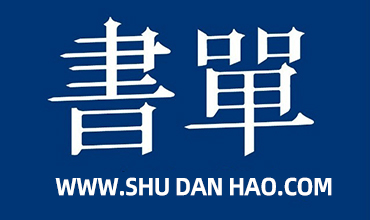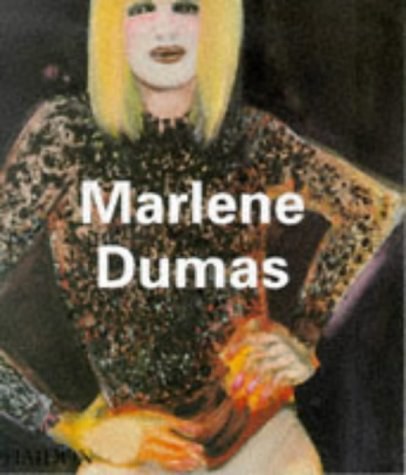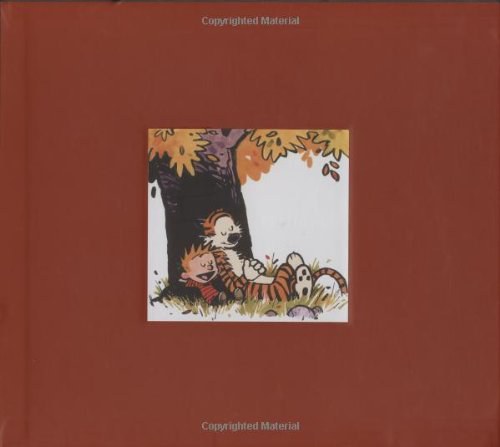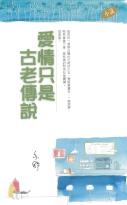
随州市博物馆《随州擂鼓墩二号墓》
书刊介绍
内容简介
《随州擂鼓墩二号墓》主要内容:The Tomb No.2 at Leigudun in Suizhou (Abstract) The tomb No. 2 at Leigudun (on a mound in Zengdu district, 2 kilometers northwest to the city proper of Suizhou) is the second largest tomb after the well-known tomb of the Marquise of Zeng, i.e., the tomb No.1 at Leigudun. Both of the tombs are located in Suizhou and belong to the members of the ruling lineage of the Zeng polity. It is believed by archaeologists that the two tombs are of equal significance in providing important evidence for understanding of the Sui culture, ritual practices and musical performances in the pre-Qin times, and the relationships between the Sui and Chu polities. The present volume reports the discovery and excavation of the tomb No.2 at Leigudun. It includes 449 burial goods of various kinds, and 32 are unearthed from a disturbing ditch. Date of the tomb and the social status of the occupant are both given in detail in the textual sections. Though the tomb No.2 was actually excavated very early, the site report only comes out as late as 2008 for many reasons. We would particularly like to thank the people who worked very hard in the past several decades keeping and conserving the materials for their publication.
The report has four chapters.
Chapter I Introduction
The first section introduces the geographic location of Suizhou, environmental and political changes since the late Western Zhou dynasty. Section one also includes the situation of the cemetery where the tomb No. 2 is located, conservation and reconstruction of the finds, and material preparation for publication.
Suizhou is located in the so-called Sui-Zao 'corridor', a narrow joint area of the south and north parts of China, with beautiful landscapes, comfortable climate conditions and fertile soil for agricultural use and densely veined with rivers; for all the above mentioned geographic and natural conditions, the city has always been perceived since the antiquity as an ideal and important location for human living and cultural communication between the south and the north of China. The Sui polity was established in the late Western Zhou period. During the early Spring and Autumn period, it moved its capital to the Sui-Zao corridor area and subsequently became a powerful polity on the east bank of the Hanshui River.
Chapter II Tombs and the Major Occupant
Data of the tomb No.2 includes four aspects: burial mound, burial pit, furnishings, and treatments of the dead.
1. There was indeed a mound right above the burial chamber of the tomb No.2 at Leigudun, which was totally leveled to the ground by the local military force when building a camp;
2. The second part introduces the location, orientation, size, structure, and the fill of the burial pit;
3. The third part introduces the major coffin and subordinate coffins; the coffin of the tomb occupant is located in the middle of the northern part of the burial chamber, seriously deteriorated; coffin accessories are scattered around; remains of another coffin, probably a subordinate coffin to the major coffin, was discov-ered in the southwestern comer of the chamber, with no burial goods inside;
4. The skeletal data is quite limited since the bones are highly deteriorated; what we can know from the bones left is that the major occupant was headed to the east, while the sacrificed victim in the accompanying coffin was buried in a north-south orientation.
Chapter III Burial Goods
Very abundant burial goods (in total, 449 single objects) have been recovered from the tomb No.2,including bronzes, stone and jade objects, pottery vessels, horn and glass objects, shell ornaments, and lead and tin vessels. According to function, they can be classified into mainly six categories, i.e., ritual vessels,musical instruments, life tools, horse and chariot fittings, adornments, and burial goods.
(1) Bronzes
Ritual vessels include: 17 ding (meat-stewing tripod), 8 gui (grain-offering vessel), 4fu (round vessel with flat bowl on high openwork foot), 10 li (tripodal cooking vessel with pouch-shaped feet), 1 yan (grain steamer), 4 zun (liquid-serving vessel), 2 washing pots, 4 pots, 3 dou (stem bowl), 1 fu (vessel with globular bottom, made to fit a stovetop), 1 dish, 1 yi (pouring vessel), 3 bi (pointed spoon), and 1 dou (ladle with cylindrical container);
Musical instruments include: 36 yongzhong bells, 1 drum stand, 22 hooks for hanging the bells;
Life tools include: 1 fire-pan, 1 dustpan, 1 lid, 1 hook-shaped implement, and 1 funnel;
Horse and chariot fittings and ornaments include: 4 canopy mounts, 5 axle-end ornaments, 6 horse bits,16 reign controllers, 102 bridle ornaments, 11 bicha, 36 bird-shaped and 18 plank-shaped adornments.
(2) Jade and stone burial goods
Ritual objects include: 1 bi (ring-shaped disc), and 1 gui (pentagonal tablet);
Musical instruments include: 12 chimestones;
Ornaments include: 2 arc-shaped pendants, and 8 agate rings;
(3) Ceramic vessels: 7 dou
(4) Lead and tin objects include 64 fish-shaped ornaments, and 15 coffin accessories;
(5) Other significant finds include 7 horn gig-bits, a pair of deer antlers, 3 crystal beads, 1 string of ring-shaped beads, and 1 shell ornament.
The tomb was most likely to have been looted in antiquity, which is corroborated by the co-occurrence of the disturbing ditch near the coffin of the major occupant and the large amount of burial goods seemingly left by the looters within the ditch by churning the tomb soil. It is for this reason, we deliberately separate these finds from those unearthed from within the tomb chamber.
The 32 finds from the ditch include 1 pottery dou, 1 stone bi, 1 jade ram figurine, 1 jade rabbit figurine,1 jade plug, 20 glass beads, 5 perforated turquoise beads, and 1 spade-shaped iron object.
All these finds are introduced in a typological order. One sample is selectively given when many typologically identical vessels are found.
Chapter IV Conclusions
The last section of this report includes the following research results:
(1) Date of the tomb No.2 at Leigudun: late phase of the early Warring States period through the early phase of the middle Warring States period;
(2) Identity of the major tomb occupant: another Marquise of the Zeng polity after the famous Marquise Yi;
(3) Though the finds reflect a serious influence from the Chu culture, the major elements of the mortuary practice belong to the Zeng cultural sphere.
相关推荐
-

杨健《创作法》
《创作法》内容简介:本讲义是电影编剧创作专业的写作课讲义,内容为电影剧本的创作理论与方法。它的理论内容可作为研究生的教材
-
![[英] 彼得·康拉德《奥逊·威尔斯》](http://oss.shudanhao.com/caiji/chazidian/2023/34382.jpg)
[英] 彼得·康拉德《奥逊·威尔斯》
奥逊·威尔斯是一个谜:他是自我成就的一个人,但仍旧无法享有自我主宰。他的人格由他所扮演的各种角色混合而成:国王、暴君、将
-

守望先锋艺术设定集
暴雪娱乐暴雪作为闻名全球的游戏巨头,自创建以来,接连推出《魔兽争霸》《星际争霸》《暗黑破坏神》《魔兽世界》《风暴英雄》《守望先锋》《炉石传说》等众多制作精良的游...
-

精通Spring4.x
《精通Spring4.x》内容简介:Spring4.0是Spring在积蓄4年后,隆重推出的一个重大升级版本,进一步加强了Spring作为Java领域第一开源
-

十二味生活设计
林怡芬,Tokyo designer college毕业。2000年起以插画创作为主。作品主要发表于出版、广告、杂志、商品设计等。代表作品有台北101MALL形...
-

逝去的年代
谢泳 男 1961年出生。山西省榆次市人。1983年毕业于山西晋中师范专科学校英语专业。毕业后留校任学报编辑。1986年调入山西省作家协会《批评家》杂志社任编辑...
-

二十世纪中国艺术(全2册)
二十世纪中国艺术(全2册) 本书特色 ★ 16开盒装,上海人民美术出版社出版★ 装帧设计精美,由书籍设计大师、视觉艺术家吕敬人设计★ 中国文联副主席、中国美术家...
-

中国篆刻史
中国篆刻史 内容简介 我国古代的玺印,历史悠久;后来由实用的社会功能,发展为欣赏的篆刻艺术,渊源流长。本书以时代为主,以篆刻事件与人物为辅,史论结合,全面系统地...
-

硬笔书法教程
硬笔书法教程 内容简介 本书共分为楷体规范字 ; 楷书 ; 行书三篇, 其主要内容包括: 单一笔画 ; 复合笔画 ; 左右偏旁 ; 上下偏旁 ; 包围偏旁 ; ...
-

中国书法艺术概览
中国书法艺术概览 本书特色 中国书法艺术历史悠久、源远流长、博大精深。它以其净化了的线条美启迪人们的心灵,培养人们的审美意趣,“精骛八极,心游万仞”,把人们引导...
-

大光《绝顶天才的混蛋》
《绝顶天才的混蛋:斯坦利·库布里克传》对于全世界的影迷来说,1999年的3月7日是个黑暗的日子,就在这一天的凌晨,一代电影宗师斯
-

田昊|晏凌《电影分析功课:拆解李安电影(修订版)》
本书以李安两部华语电影《《色﹒戒》与《卧虎藏龙》为主要拆解对象,并附评《少年派的奇幻漂流》。其最大的特色便是拆解电影,截
-
![[法] 阿兰·罗伯格里耶《桃色与黑色剧·玩火》](http://oss.shudanhao.com/caiji/chazidian/2023/34317.jpg)
[法] 阿兰·罗伯格里耶《桃色与黑色剧·玩火》
“桃色与黑色”意味着什么呢?它仅仅是对两种成分的一种肯定性指涉,在我看来,这两种成分是跟电影密不可分的。第一种存在于年轻
-

冯先铭《中国陶瓷》
中国青铜器(修订本),ISBN:9787532530014,作者:冯先铭作者简介 冯先铭(1921-1993),中国古陶瓷专家,故宫博物馆研究员,中
-

周信芳全集:17:一:佚文卷
周信芳全集:17:一:佚文卷 内容简介 《周信芳全集》共24卷,包括演本、文论、曲谱、影像、佚文、演剧广告六个部分。收集了周信芳一生的文化遗存,把他留在当代的所...
-

敦煌石窟艺术简史
敦煌石窟艺术简史 本书特色 《敦煌石窟美术简史》一书,由敦煌研究院研究员赵声良撰写。全书约15万余字,插图200余幅,共分六章,按照时代顺序介绍并论述了敦煌石窟...
-

中国艺术博物馆空间形态研究
中国艺术博物馆空间形态研究 本书特色 《中国艺术博物馆空间形态研究》将博物馆空间分为四个区域:一是公共空间(无藏品、对公众开放);二是展示空间(有藏品、对公众开...
-

唐克扬《在空间的密林中》
《在空间的密林中》收录了作者在过去的若干年内对于当代建筑问题特别是“中国建筑”的思考,从某种程度上属于连续的个人经历和思
-

王羲之《兰亭序》行书教程-最新修订版
王羲之《兰亭序》行书教程-最新修订版 本书特色 《中国书法培训教程》系列丛书是由来自教学**线的书法名家精心编写的一套通俗、实用、由浅入深的入门级丛书。它适合各...
-

中国传统相声
中国传统相声 内容简介 《中国传统相声精品集》遵循了传统相声固有的娱乐、歌颂、讽刺等三大功能,所选作品亦尽量体现了全面性、科学性及代表性的原则,尤其突出了有口皆...





